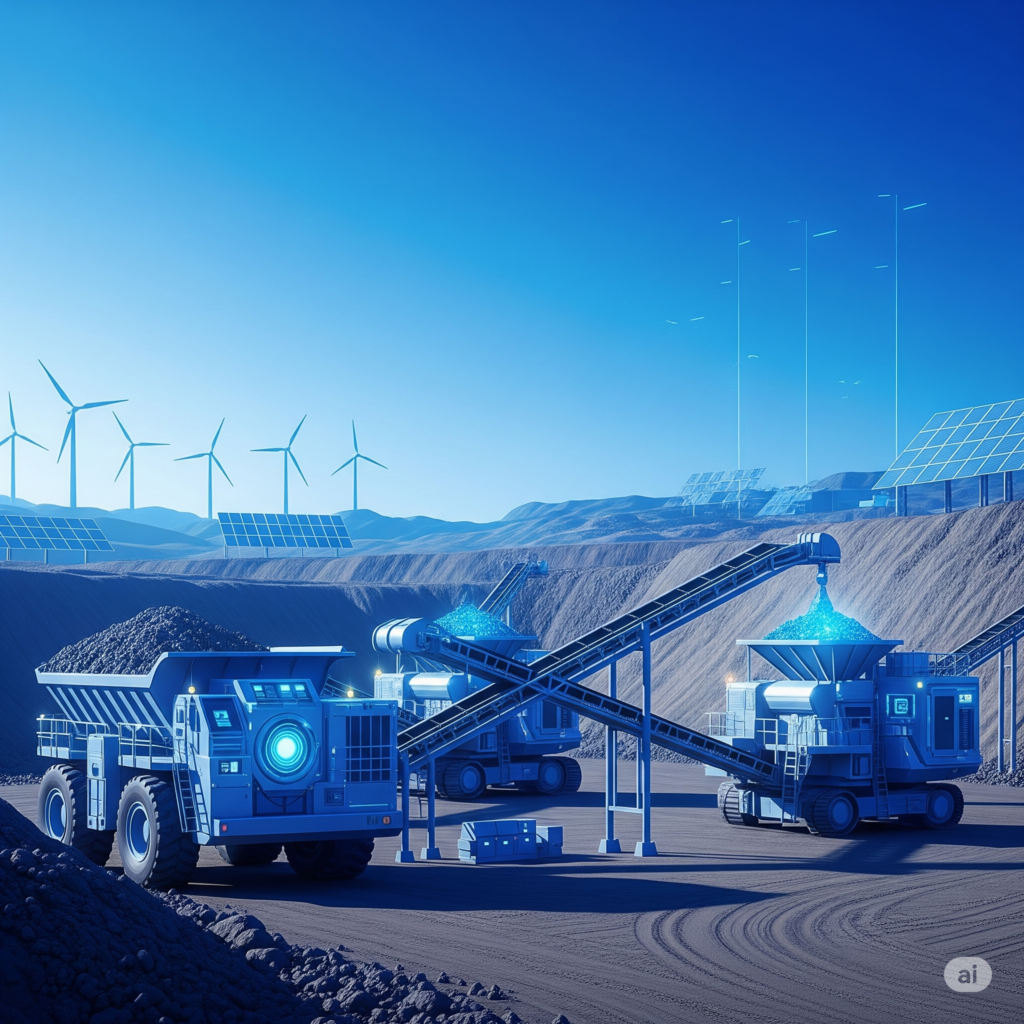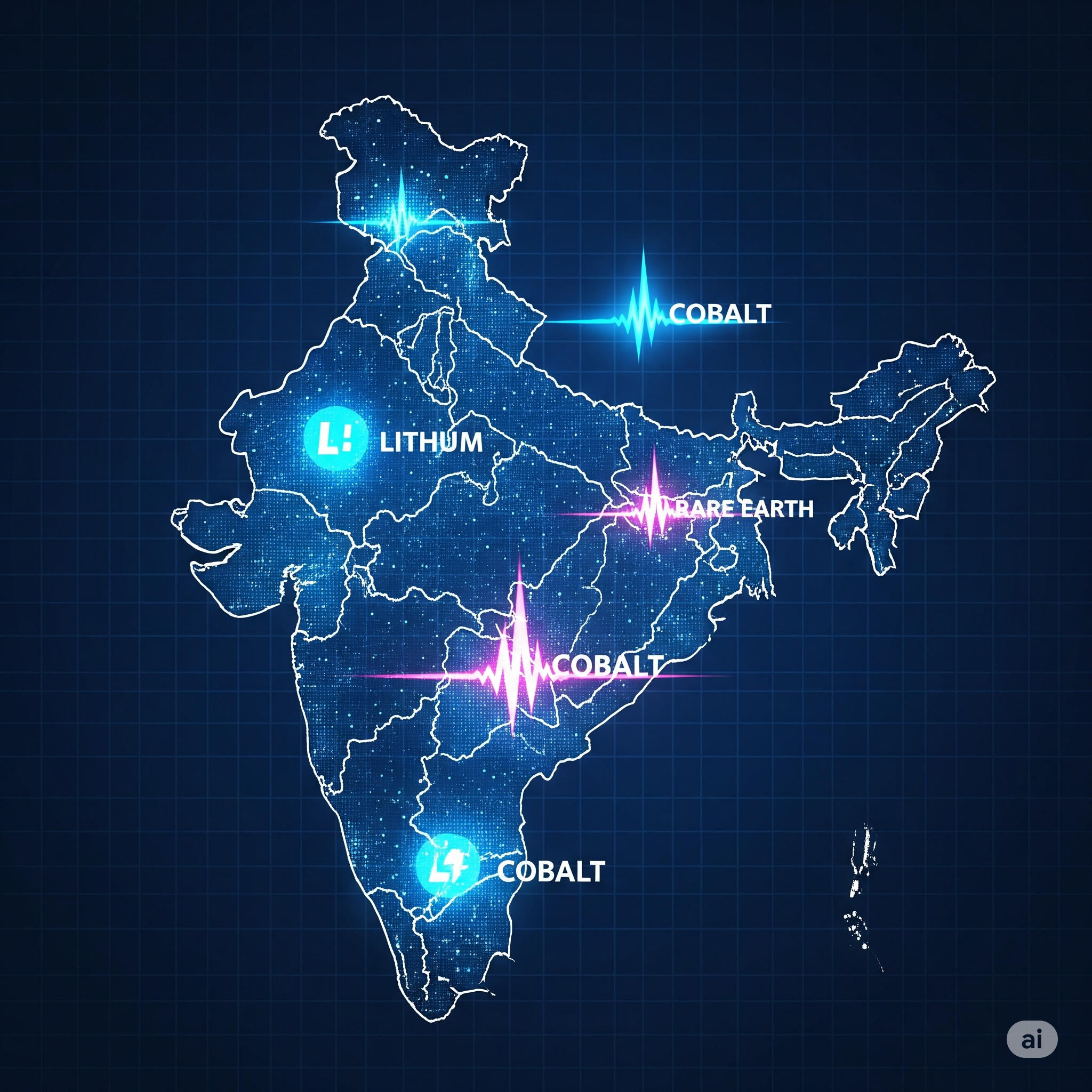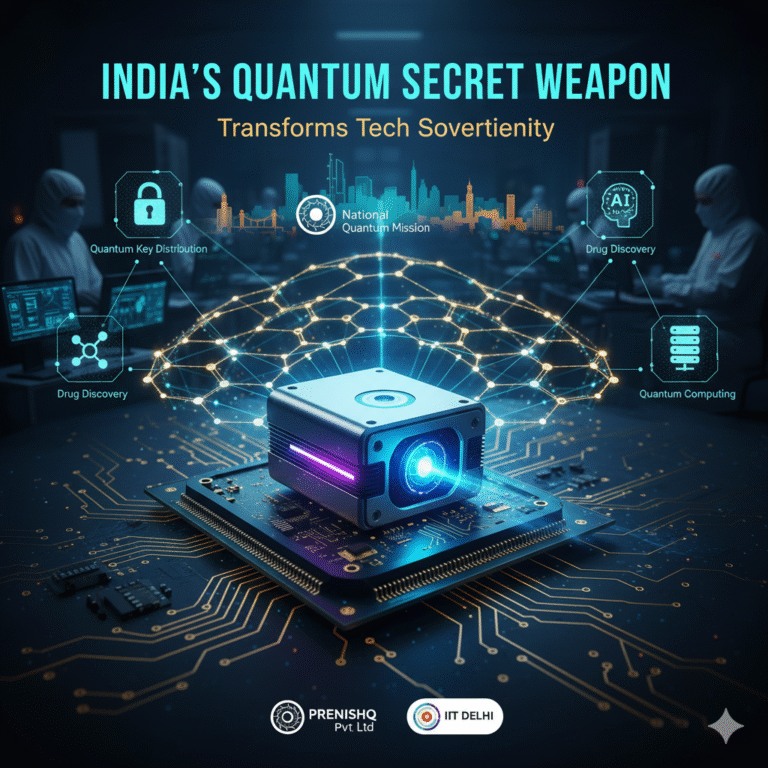📦 In-Short:
- Strategic minerals are vital for defense, electronics, EVs, and renewable energy.
- India relies heavily on imports for rare earth elements and lithium.
- The 2023 Critical Minerals List and Mines and Minerals (Amendment) Act, 2023 are key policy shifts.
- Public–private partnerships, foreign collaborations, and domestic exploration are essential.
- India must focus on processing infrastructure, circular economy, and skill development to secure its mineral future.
🪨 India’s Strategic Minerals Policy: Mapping the Next Steps
In a world increasingly powered by batteries, chips, and clean energy, strategic minerals have become the new oil. For India, ensuring a steady, secure, and sustainable supply of these minerals is not just a matter of economic growth—it’s about national security and global competitiveness.
Let’s explore the evolving policy landscape, the challenges India faces, and the roadmap for securing its strategic mineral future.
🧱 What Are Strategic Minerals?
Strategic or critical minerals are non-fuel mineral resources essential for modern technologies, including:
- Lithium, cobalt, nickel – EV batteries, energy storage
- Rare earth elements – defense, electronics, wind turbines
- Graphite, tungsten, tin – semiconductors, aerospace, sensors
These minerals are indispensable for industries such as defense, telecommunications, energy, and mobility.
🌍 Why Strategic Minerals Matter to India
⚙️ National Security & Technological Sovereignty
India’s push toward self-reliance (Atmanirbhar Bharat) in electronics, semiconductors, and defense depends on secure access to these minerals.
🔋 Green Energy Transition
With ambitious targets for electric vehicles and renewable energy, India’s demand for lithium, cobalt, and REEs is growing exponentially.
📦 Import Dependence
India currently imports over 90% of its needs for many strategic minerals—especially from China, Australia, and Africa—making it vulnerable to geopolitical risks.
📜 Recent Policy Moves: What Has India Done?
1. Critical Minerals List (2023)
India released a list of 30 critical minerals, aligning with international frameworks like the US, EU, and Australia. This helps prioritize exploration, investment, and R&D.
2. Mines and Minerals (Amendment) Act, 2023
- Opened up mining of critical minerals to private players
- Encouraged auction-based licensing for transparency
- Allowed for reconnaissance, exploration, and production by specialized companies
3. KABIL (Khanij Bidesh India Ltd.)
Formed as a joint venture of NALCO, HCL, and MECL, KABIL is tasked with sourcing strategic minerals abroad, especially in Argentina, Australia, and Africa.
🛑 Key Challenges India Faces
🚧 Limited Domestic Availability
India has known reserves of some critical minerals (e.g., rare earths, bauxite, titanium), but prospecting and extraction are underdeveloped.
🔄 Lack of Processing Infrastructure
Even when minerals are mined, India lacks sufficient refining and separation capacity—especially for rare earths.
🌱 Environmental and Social Risks
Mining operations, if not carefully managed, can lead to ecological degradation and community displacement.
🧠 Skill & Technology Gaps
Advanced geological surveying, processing, and waste management need skilled professionals and global collaborations.
📌 The Road Ahead: Mapping the Next Steps

1. Strengthen Domestic Exploration
- Invest in modern geophysical and satellite mapping tools
- Encourage exploration-focused startups and research institutes
2. Expand Processing and Refining Capacity
- Set up rare earth and lithium processing plants under PLI schemes
- Incentivize public-private partnerships in downstream sectors
3. Diversify Global Supply Chains
- Build strategic alliances with resource-rich countries (Australia, Chile, Brazil, DRC)
- Use forums like BRICS, QUAD, and G20 to secure mineral trade deals
4. Develop a Circular Economy for Minerals
- Launch a national e-waste recycling mission for critical mineral recovery
- Promote battery reuse, urban mining, and reverse logistics
5. Invest in Human Capital and R&D
- Encourage specialized mining and metallurgy education
- Support indigenous innovation in material science and mineral processing
🌐 Global Best Practices to Learn From
- Australia’s Critical Minerals Strategy: Robust mapping, green extraction, and trade alignment with partners.
- EU’s Critical Raw Materials Act: Emphasis on recycling and import security.
- US Inflation Reduction Act: Tax incentives for domestic EV mineral sourcing.
India must learn, adapt, and innovate to avoid the vulnerabilities others are now trying to fix.
🏁 Conclusion: From Dependency to Dominance
India’s journey to becoming a global economic and tech powerhouse hinges on how well it manages its strategic mineral needs. The policy groundwork has been laid, but execution, investment, and global collaboration will determine success.
If done right, India won’t just meet its mineral needs—it will lead in the global green and digital transformation.











+ There are no comments
Add yours